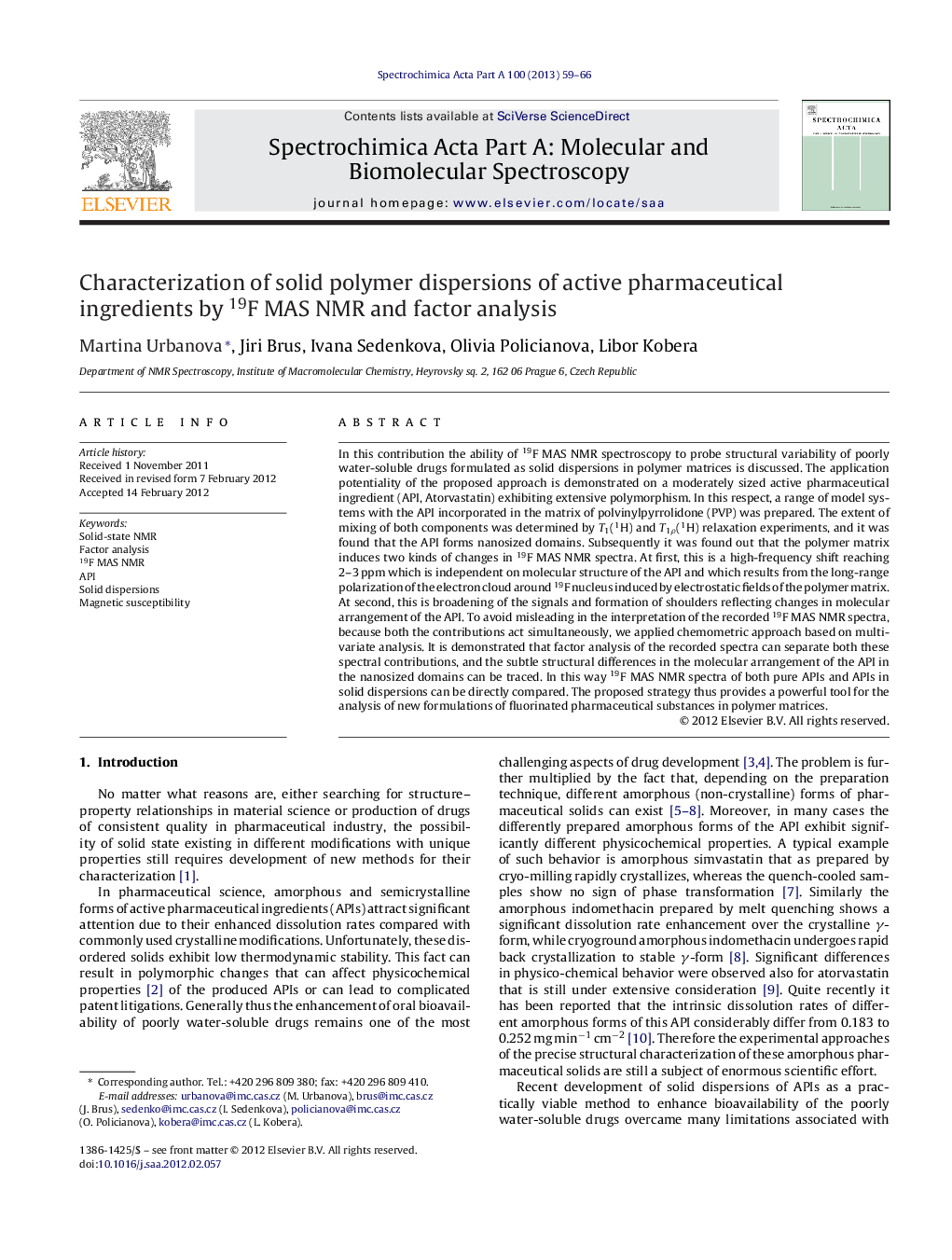| Article ID | Journal | Published Year | Pages | File Type |
|---|---|---|---|---|
| 1230935 | Spectrochimica Acta Part A: Molecular and Biomolecular Spectroscopy | 2013 | 8 Pages |
In this contribution the ability of 19F MAS NMR spectroscopy to probe structural variability of poorly water-soluble drugs formulated as solid dispersions in polymer matrices is discussed. The application potentiality of the proposed approach is demonstrated on a moderately sized active pharmaceutical ingredient (API, Atorvastatin) exhibiting extensive polymorphism. In this respect, a range of model systems with the API incorporated in the matrix of polvinylpyrrolidone (PVP) was prepared. The extent of mixing of both components was determined by T1(1H) and T1ρ(1H) relaxation experiments, and it was found that the API forms nanosized domains. Subsequently it was found out that the polymer matrix induces two kinds of changes in 19F MAS NMR spectra. At first, this is a high-frequency shift reaching 2–3 ppm which is independent on molecular structure of the API and which results from the long-range polarization of the electron cloud around 19F nucleus induced by electrostatic fields of the polymer matrix. At second, this is broadening of the signals and formation of shoulders reflecting changes in molecular arrangement of the API. To avoid misleading in the interpretation of the recorded 19F MAS NMR spectra, because both the contributions act simultaneously, we applied chemometric approach based on multivariate analysis. It is demonstrated that factor analysis of the recorded spectra can separate both these spectral contributions, and the subtle structural differences in the molecular arrangement of the API in the nanosized domains can be traced. In this way 19F MAS NMR spectra of both pure APIs and APIs in solid dispersions can be directly compared. The proposed strategy thus provides a powerful tool for the analysis of new formulations of fluorinated pharmaceutical substances in polymer matrices.
Graphical abstractFactor analysis of 19F MAS NMR spectra demonstrates fast and reliable method of characterization of amorphous modifications of solid pharmaceuticals in solid polymer dispersions.Figure optionsDownload full-size imageDownload as PowerPoint slideHighlights► New non-crystalline forms of APIs are created in solid dispersions. ► Structural changes of APIs are detected in 19F MAS NMR spectra. ► 19F MAS NMR spectra reflect the extent of interactions with polymer matrix. ► Factor analysis can distinguish different forms of the API. ► Factor analysis eliminates susceptibility effects.
